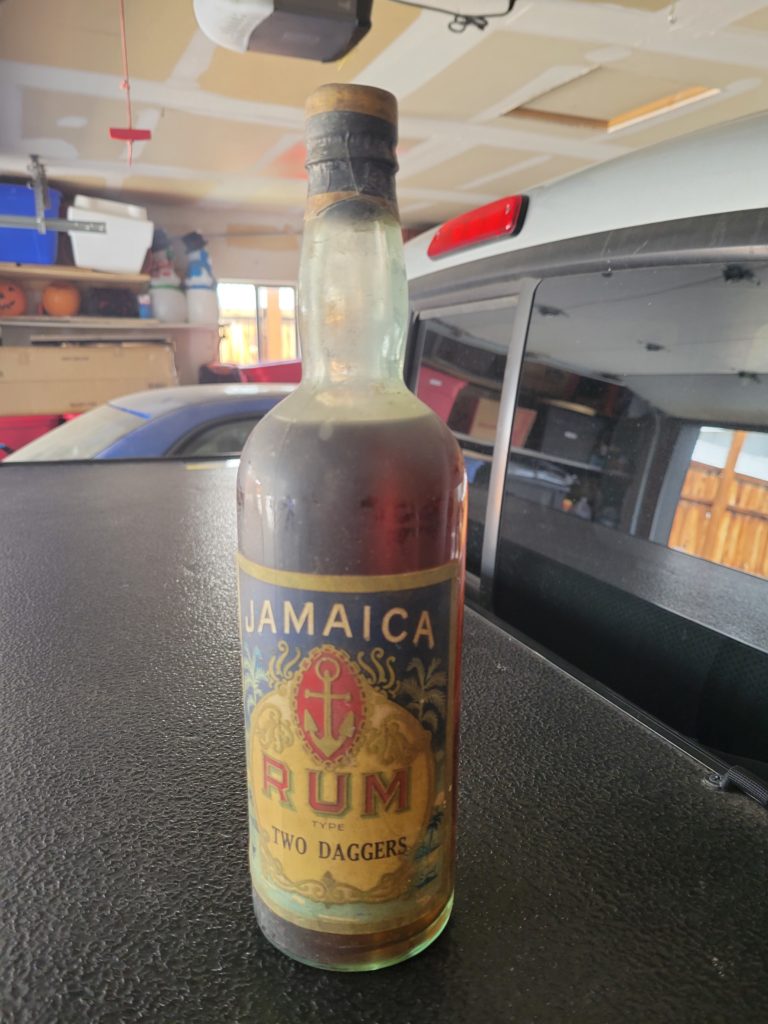Ever seen a “Prada” or “Gucci” purse at a swap meet for a suspiciously low price? Anything of value will eventually be counterfeited, and that includes food and drink. Sushi is notoriously dodgy, with trash fish standing in for pricier delicacies, and there have been scandals involving cheese and wines, but that’s not all. The world’s largest counterfeit food scam may be in honey, because there are thousands of tons of material labeled as honey coming from China that are really corn syrup or other sweeteners with food coloring added. It’s the same with alcohol, and particularly convenient for the fraudsters because by the time you have that first sip, you may be far away from the place where you bought it.
This is a longstanding problem – consider this bottle that one of my readers found at an estate sale:

Those who know Jamaican rums are probably familiar with Two Dagger, an excellent rum produced by Wray & Nephew. They also know from one glance that this isn’t it, and it’s not just that the the name on the label is plural instead of singular and the Wray & Nephew name isn’t there. If you look closely beneath the word “Rum” you will see the word “type” and those four letters devalue this bottle a lot. They mean it is quite possible that whatever is in this bottle isn’t all rum, or that it doesn’t contain any rum at all and is something else designed to taste like rum. What might that be? It’s hard to tell, because the raw material for Jamaican rum is molasses, and on that island it’s about the cheapest thing that can be fermented and distilled. Given that some fraudsters are quite willing to misrepresent what they’re selling, this might not be from Jamaica at all.
My best guess is that this bottle dates from the 1950’s or 1960’s based on the typography, and that it was bottled for sale to unwary tourists. I could be wrong, and would welcome any enlightenment – has anybody else seen a bottle like this?
